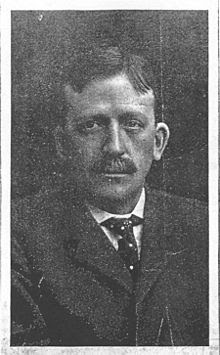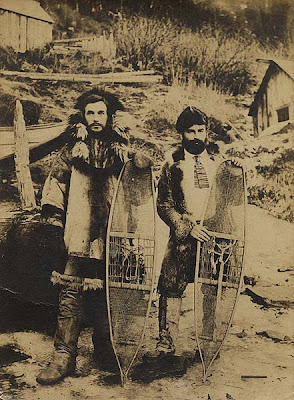 Royal Arch Gunnison was born on June 24, 1873 in Binghampton, New York. That evening his father, Christopher B. Gunnison, attended a meeting of his Masonic chapter, Binghamton No. 139, and returning home, found that he was the father of a boy whom he promptly named “Royal Arch” which is a Masonic term, I guess. Royal became a lawyer and was appointed by Teddy Roosevelt to be a district judge in Skagway Alaska in 1904 before going into private practice in Juneau five years later. He drove the last spike of the Valdez-Yukon Railway. He was a member of the Arctic Brotherhood and a 33° member of the Scottish Rite Masons in Seattle in 1916. He was also a member of the Knights Templar and, yes, a Royal Arch Mason. A DeMolay Chapter in Juneau was named for him in 1932.
Royal Arch Gunnison was born on June 24, 1873 in Binghampton, New York. That evening his father, Christopher B. Gunnison, attended a meeting of his Masonic chapter, Binghamton No. 139, and returning home, found that he was the father of a boy whom he promptly named “Royal Arch” which is a Masonic term, I guess. Royal became a lawyer and was appointed by Teddy Roosevelt to be a district judge in Skagway Alaska in 1904 before going into private practice in Juneau five years later. He drove the last spike of the Valdez-Yukon Railway. He was a member of the Arctic Brotherhood and a 33° member of the Scottish Rite Masons in Seattle in 1916. He was also a member of the Knights Templar and, yes, a Royal Arch Mason. A DeMolay Chapter in Juneau was named for him in 1932.
In Juneau, in 1910, Royal had a son who he also named Royal Arch Gunnison. Royal Jr. became famous in World War 2 as a Mutual Network war-caster in Manilla. He had stayed on the air until U.S. Army engineers blew up the transmitting station and equipment a jump ahead of the Japanese. As a result, 34-year-old Gunnison and his wife spent 17 months in Japanese concentration camps outside Manila and Shanghai. Gunnison and his wife Marjorie were later repatriated from China with 1,438 other internees.
Royal Arch Gunnison Jr. made the rounds to be interviewed in the press and on the radio. His story appeared in Life Magazine and in Billboard, where he outlined what entertainment was like in prison camps. He wrote a book on his experiences called “So Sorry, No Peace” published in October 1944. Though he survived the ordeals of a war prisoner, he didn’t survive an accident that took his life. Gunnison headed back to Asia in June 1946. Three months later, he died in a plane crash in Hong Kong.
Judge Royal Arch Gunnison Sr. died in Juneau of apoplexy at the age of 45, on this day, June 18, 1918 and is buried in the Evergreen Cemetery. He is seen above at the height of his career.
findagrave; justamason; ancestry.








